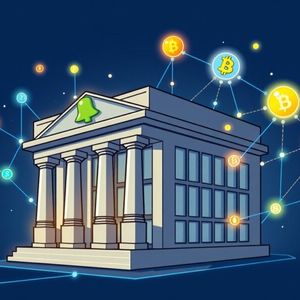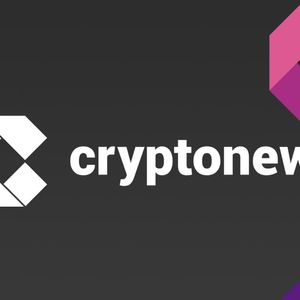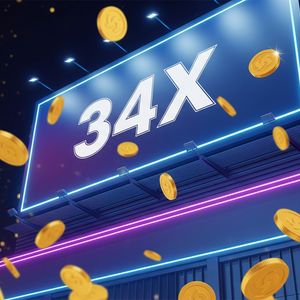Revolutionizing Finance: Grove’s $250M RWA Tokenization on Avalanche
8 min read
BitcoinWorld Revolutionizing Finance: Grove’s $250M RWA Tokenization on Avalanche In a groundbreaking move that signals a significant shift in the financial landscape, Grove, a prominent project within the SKY ecosystem, is set to revolutionize finance by tokenizing a staggering $250 million worth of Real-World Assets (RWAs) on the Avalanche blockchain. This ambitious initiative, reported by Cointelegraph, is not just another crypto venture; it’s a strategic partnership with global asset management titan Janus Henderson Anemoy, which oversees an impressive $373 billion in assets. This collaboration marks a pivotal moment for RWA tokenization , bridging the gap between traditional finance and the burgeoning world of decentralized finance (DeFi). What Exactly is RWA Tokenization? Before diving deeper into Grove’s transformative project, let’s understand the core concept of RWA tokenization . Simply put, it’s the process of converting tangible and intangible assets into digital tokens on a blockchain. Imagine taking something like real estate, fine art, commodities, or even corporate debt, and representing its ownership as a secure, verifiable token. These tokens can then be bought, sold, and traded on a blockchain, bringing unprecedented liquidity and accessibility to assets that were traditionally illiquid and difficult to transfer. The benefits are manifold: Increased Liquidity: Assets that are typically hard to sell quickly, like property, can be fractionalized and traded instantly on a global scale. Greater Accessibility: Investors can own a fraction of high-value assets that were previously out of reach due to high entry costs. Enhanced Transparency: Blockchain’s immutable ledger provides a clear, verifiable record of ownership and transactions. Reduced Costs and Friction: Eliminates intermediaries, streamlines processes, and lowers transaction fees. Faster Settlement: Transactions can settle in minutes, not days, unlike traditional systems. The Grove-Janus Henderson Powerhouse Partnership The alliance between Grove and Janus Henderson Anemoy is a testament to the growing institutional interest in blockchain technology. Janus Henderson Anemoy, a well-established player in the global asset management arena, brings decades of expertise in managing complex financial instruments and navigating regulatory landscapes. Their involvement lends significant credibility and a stamp of approval to the burgeoning RWA tokenization space. As part of this landmark collaboration, two key funds will be launched on Avalanche: The Anemoy AAA CLO Fund: This fund will focus on Collateralized Loan Obligations (CLOs) with an AAA rating, indicating the highest credit quality. Tokenizing CLOs allows for greater transparency, efficiency, and potentially broader investor participation in a sophisticated debt instrument market. The Anemoy Treasury Fund: This fund will likely focus on tokenizing traditional treasury assets, offering investors exposure to stable, low-risk investments on-chain. This could provide a secure on-ramp for institutional capital seeking blockchain-native versions of traditional financial products. The decision to tokenize $250 million is a substantial commitment, signaling confidence in the underlying technology and the potential for these tokenized assets to attract significant institutional and retail investment. This isn’t just a pilot; it’s a major deployment designed to demonstrate the viability and advantages of blockchain for large-scale asset management. Why Avalanche is the Chosen Platform for RWA Tokenization? Grove’s choice of Avalanche (AVAX) as the foundational blockchain for this monumental RWA tokenization project is no coincidence. Avalanche offers several compelling advantages that make it an ideal candidate for institutional-grade applications: High Performance and Scalability: Avalanche boasts impressive transaction speeds and throughput, crucial for managing high-volume financial operations without congestion. Its unique subnet architecture allows for custom, application-specific blockchains that can meet specific regulatory or privacy requirements. Low Transaction Costs: Compared to some other networks, Avalanche maintains relatively low transaction fees, making it economically viable for frequent trading and asset management. Security and Reliability: Built with robust security features, Avalanche provides a dependable and secure environment for tokenized assets, which is paramount for institutional adoption. EVM Compatibility: Its compatibility with the Ethereum Virtual Machine (EVM) makes it easier for developers to build and deploy decentralized applications, leveraging existing tools and talent. Institutional Focus: Avalanche has actively pursued institutional partnerships and developed features catering to enterprise needs, making it a preferred choice for projects bridging traditional finance and blockchain. The ability to create custom subnets means Grove and Janus Henderson Anemoy can design a bespoke environment for their tokenized assets, ensuring compliance, privacy, and performance tailored to their exact specifications. This level of customization is vital for handling sensitive financial data and adhering to stringent regulatory standards. Unlocking New Horizons: Benefits of Tokenized Real-World Assets The implications of this partnership and the broader trend of RWA tokenization extend far beyond the immediate participants. This movement is poised to reshape global finance by: 1. Democratizing Investment: By fractionalizing high-value assets, RWA tokenization opens up investment opportunities to a much broader audience. An individual might not be able to buy an entire commercial building, but they could easily purchase a token representing a small fraction of it. 2. Enhancing Capital Efficiency: Assets that once sat dormant on balance sheets can now be easily collateralized, traded, or used in DeFi protocols, unlocking trapped capital and improving overall market efficiency. 3. Streamlining Operations: The automation capabilities of smart contracts can significantly reduce the manual effort, time, and costs associated with asset management, transfer, and compliance. 4. Globalizing Markets: Blockchain’s borderless nature means that tokenized assets can be accessed and traded by anyone, anywhere in the world, fostering a truly global marketplace for previously localized assets. 5. Improving Transparency and Auditability: The public and immutable nature of blockchain records provides an unprecedented level of transparency for asset ownership and transaction history, making auditing and compliance simpler and more reliable. Navigating the Landscape: Challenges and Considerations for RWA Tokenization While the promise of RWA tokenization is immense, it’s not without its hurdles. Several critical considerations need to be addressed for widespread adoption: Regulatory Clarity: The legal and regulatory frameworks surrounding tokenized securities and assets are still evolving in many jurisdictions. Clear guidelines are essential for institutional confidence. Legal Enforceability: Ensuring that the digital token legally represents the underlying physical asset and that ownership rights are enforceable in traditional legal systems is paramount. Valuation and Pricing: Establishing reliable and transparent mechanisms for valuing and pricing tokenized assets, especially those that are illiquid in their traditional form, is crucial. Interoperability: As more assets become tokenized on different blockchains, seamless interoperability between these networks will be necessary to prevent fragmentation. Security Risks: While blockchains are inherently secure, smart contract vulnerabilities, hacking attempts, and custodial risks remain concerns that require robust solutions. The partnership between Grove and Janus Henderson Anemoy is a positive step in addressing some of these challenges, particularly concerning legal and compliance aspects, given Janus Henderson’s experience in regulated markets. The Broader Impact: Bridging Traditional Finance and Crypto This initiative exemplifies a broader trend: the convergence of traditional finance (TradFi) and decentralized finance (DeFi). For years, these two worlds operated largely in parallel, with skepticism on both sides. However, projects like Grove’s are demonstrating that blockchain technology isn’t just for speculative cryptocurrencies; it’s a powerful infrastructure for enhancing and innovating traditional financial services. Institutional adoption of blockchain-based solutions for RWAs can bring: Massive Capital Influx: Billions, if not trillions, of dollars from traditional markets could eventually flow into the blockchain ecosystem. New Financial Products: Hybrid products that combine the best of both worlds – the stability of traditional assets with the efficiency and transparency of blockchain. Increased Legitimacy for Crypto: As reputable institutions engage with blockchain, it helps shed the ‘wild west’ perception and establishes crypto as a legitimate, powerful technology. Future Outlook: What’s Next for RWA Tokenization? The tokenization of real-world assets is still in its nascent stages, but the trajectory is clear. As regulatory clarity improves and technological solutions mature, we can expect to see an exponential increase in the types and volumes of assets being tokenized. From private equity and venture capital funds to intellectual property and carbon credits, the possibilities are vast. Grove and Janus Henderson Anemoy’s pioneering efforts on Avalanche are setting a precedent for how large-scale, institutional-grade RWA tokenization can be successfully implemented. This collaboration will serve as a blueprint for future endeavors, inspiring other traditional financial giants to explore the efficiencies and opportunities that blockchain technology offers. Conclusion Grove’s ambitious plan to tokenize $250 million in real-world assets on Avalanche, backed by the formidable expertise of Janus Henderson Anemoy, marks a significant milestone in the evolution of finance. It’s a clear signal that the future of asset management is increasingly digital, decentralized, and highly efficient. While challenges remain, the undeniable benefits of liquidity, accessibility, and transparency offered by RWA tokenization are too compelling to ignore. This partnership is not just about digitizing assets; it’s about building a more inclusive, efficient, and interconnected global financial system. The journey has just begun, and the implications for both traditional investors and crypto enthusiasts are truly transformative. Frequently Asked Questions (FAQs) Q1: What are Real-World Assets (RWAs) in the context of blockchain? A1: Real-World Assets (RWAs) refer to tangible or intangible assets that exist outside of the blockchain and are tokenized to be represented digitally on a distributed ledger. Examples include real estate, commodities, art, bonds, equities, and intellectual property. Q2: How does Grove’s partnership with Janus Henderson Anemoy enhance RWA tokenization? A2: Grove’s partnership with Janus Henderson Anemoy brings together blockchain innovation with established financial expertise and regulatory compliance. Janus Henderson’s involvement lends significant credibility, legal understanding, and a large asset management infrastructure, which is crucial for handling complex financial instruments like CLOs and treasury funds in a tokenized format. Q3: Why was Avalanche chosen as the blockchain for this initiative? A3: Avalanche was selected due to its high performance, scalability (especially through its subnet architecture), low transaction costs, robust security, and EVM compatibility. These features make it well-suited for institutional-grade applications requiring efficiency, customization, and reliability for large-scale RWA tokenization. Q4: What are the main benefits of tokenizing real-world assets? A4: Key benefits include increased liquidity for traditionally illiquid assets, greater accessibility for a wider range of investors (through fractional ownership), enhanced transparency and auditability via blockchain’s immutable ledger, reduced operational costs, and faster settlement times compared to traditional finance. Q5: What challenges might RWA tokenization face in the future? A5: Despite its potential, RWA tokenization faces challenges such as evolving regulatory frameworks, ensuring the legal enforceability of tokenized ownership, establishing reliable valuation methods, achieving interoperability between different blockchain networks, and mitigating potential security risks associated with smart contracts and digital asset custody. Q6: How will this partnership impact the broader financial landscape? A6: This partnership is a significant step towards bridging traditional finance and decentralized finance. It could lead to massive capital inflows from traditional markets into the blockchain ecosystem, foster the creation of new hybrid financial products, and further legitimize blockchain technology as a robust infrastructure for global asset management. If you found this article insightful, please consider sharing it with your network! Your support helps us bring more valuable insights into the evolving world of blockchain and finance. To learn more about the latest crypto market trends, explore our article on key developments shaping RWA tokenization institutional adoption. This post Revolutionizing Finance: Grove’s $250M RWA Tokenization on Avalanche first appeared on BitcoinWorld and is written by Editorial Team

Source: Bitcoin World



